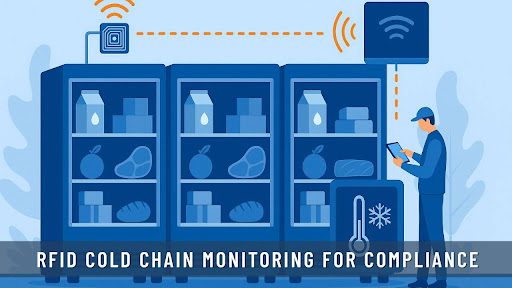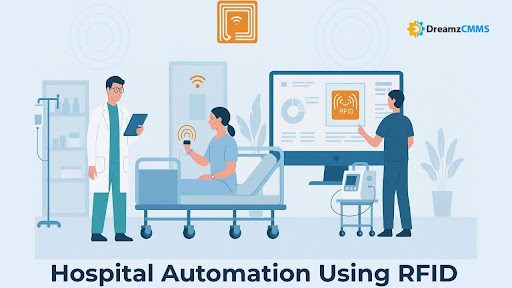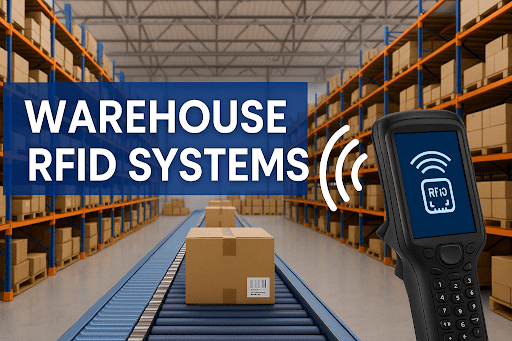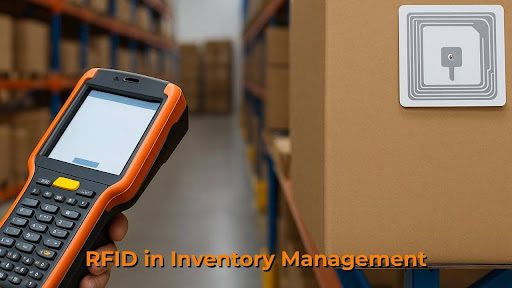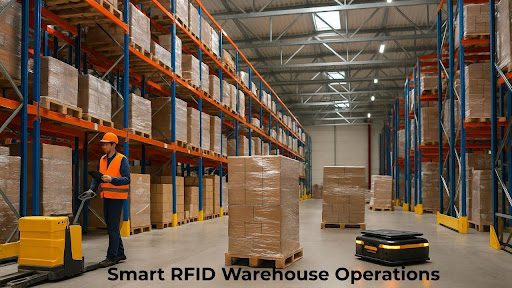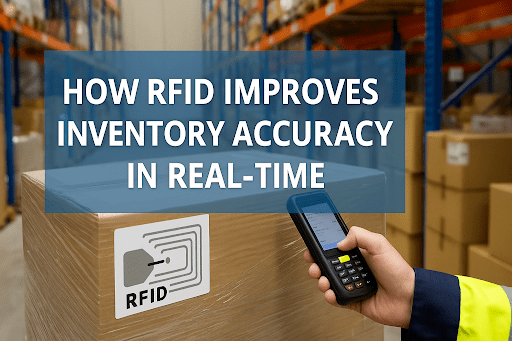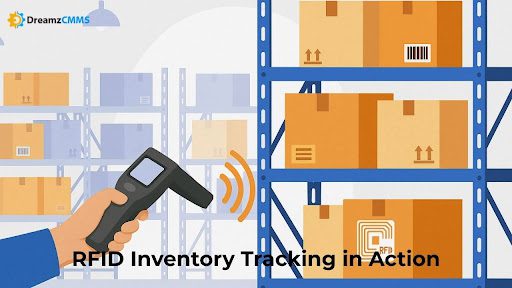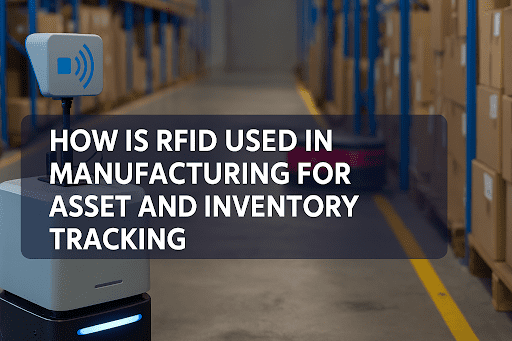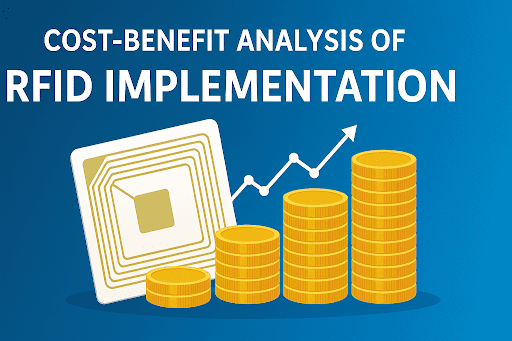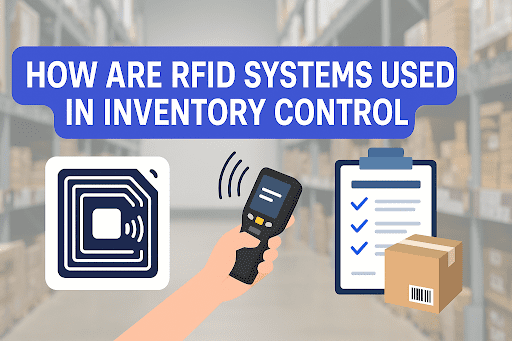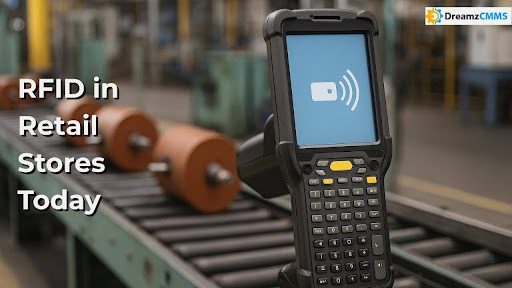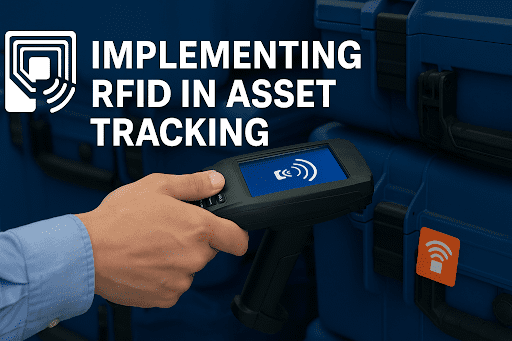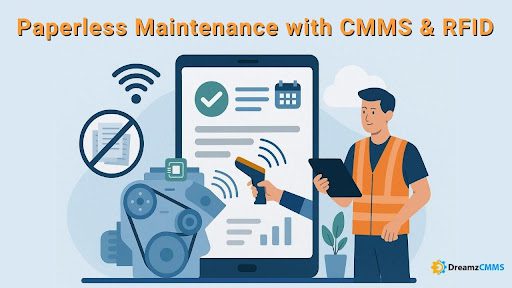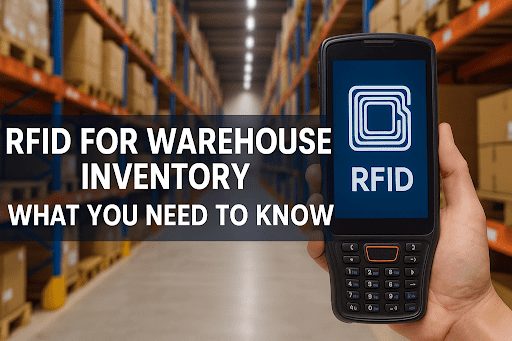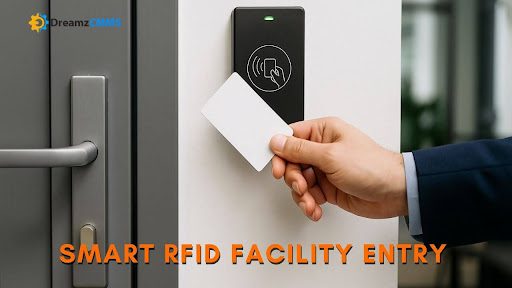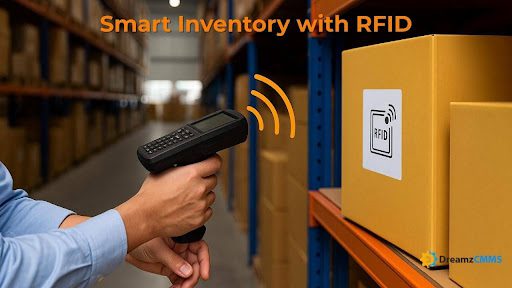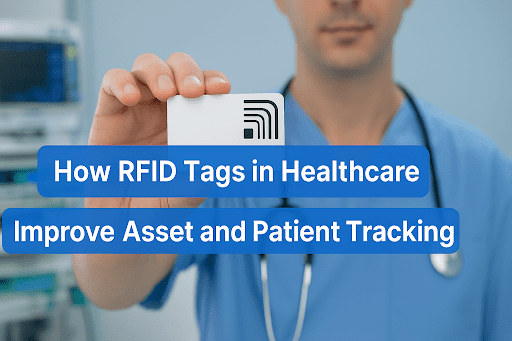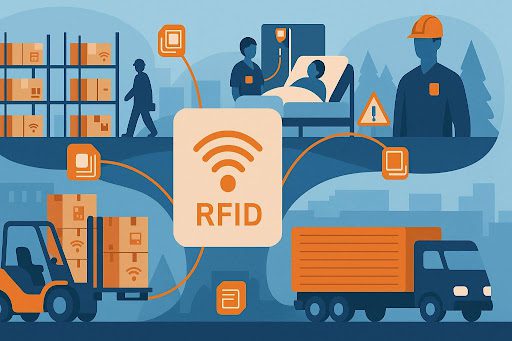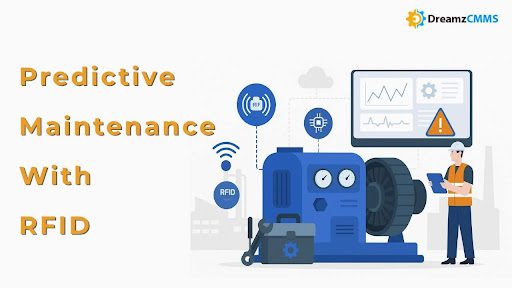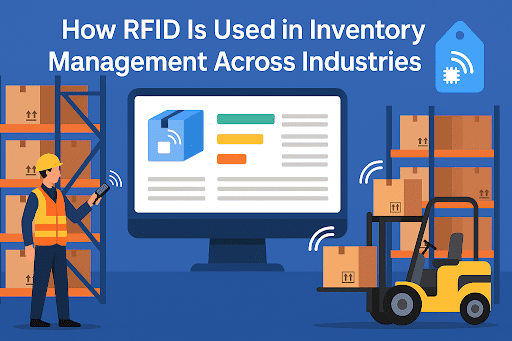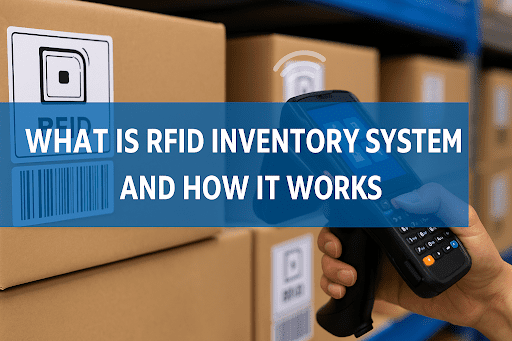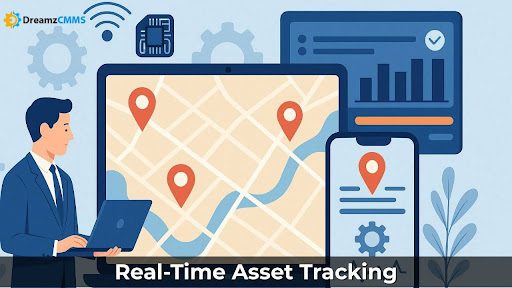 BACK TO Blog
BACK TO Blog
Asset Rental Management
RFID Asset Tracking
The current quick supply chain requires large warehouses to maintain accurate inventory records and boost delivery speed along with operating efficiently. The tracking methods of traditional manual counting and barcode scanning fall short when handling extensive warehouse operations across multiple locations. The implementation of RFID warehouse inventory tracking delivers transformative
- August 14, 2025
- DreamzCMMS Team
- 10 minutes read
- August 14, 2025
- DreamzCMMS Team
- 10 minutes read
The current quick supply chain requires large warehouses to maintain accurate inventory records and boost delivery speed along with operating efficiently. The tracking methods of traditional manual counting and barcode scanning fall short when handling extensive warehouse operations across multiple locations.
The implementation of RFID warehouse inventory tracking delivers transformative benefits as an inventory management solution. RFID technology enables large-scale warehouses to gain immediate oversight of stock while performing automated inventory counting and reducing errors throughout scalable operations.
This introduction provides a detailed overview about what is RFID asset tracking and their industry-specific implementation methods for beginners.
Optimize Equipment Reliability with Smart Maintenance ToolsModern maintenance management solutions enable organizations to reach maximum asset availability while minimizing equipment deterioration.Work order management becomes streamlined while preventive schedules run automatically and asset performance tracking occurs without difficulty. Asset Maintenance Management Software |
What is RFID Warehouse Inventory Tracking?
RFID warehouse inventory tracking allows the use of radio waves to identify and monitor products and assets stored in warehouses. Each product receives an RFID chip containing distinctive information. The RFID readers operate through automatic data acquisition without the requirement of barcode scanning alignment that traditional barcodes need.
Readers can understand RFID Tracking System details by visiting our RFID Tracking System guide which describes its components and explains its advantages across different business domains.
Key Components of a Warehouse Inventory Tracking RFID System
- RFID Tags
- The tracking of individual items requires inexpensive passive RFID tags that operate over short distances.
- Active tags (battery-powered, longer range) for pallets, equipment, or containers.
- RFID Readers
- Fixed readers at entry/exit points, shelves, or conveyor belts.
The implementation of fixed readers takes place at entry/exit points, shelves and conveyor belts throughout the warehouse. - Handheld readers for mobile audits and spot checks.
- Fixed readers at entry/exit points, shelves, or conveyor belts.
- Antennas
- The antenna systems help readers expand their coverage area to achieve complete zone monitoring.
- The antenna systems help readers expand their coverage area to achieve complete zone monitoring.
- RFID Tracking Software
- WMS or ERP systems connect to this software to process real-time data while displaying it to users.
- Cloud-Based Dashboard
- Warehouse managers gain real-time access to RFID tracking information through a cloud-based dashboard.
Why Large Operations Need RFID Warehouse Tracking Systems
Large warehouse operations with multiple warehouse locations face significant challenges in inventory management because of their scale. Advanced tools are necessary because inefficient operations and inaccurate records and delays will otherwise degrade both productivity and profit levels.
1. High-Volume SKU Management
The operations of large warehouses involve managing thousands of SKUs distributed among different product ranges and packaging variants and storage sections. The manual tracking process requires excessive work while remaining vulnerable to mistakes. A real-time warehouse RFID tracking system provides immediate identification and tracking of every item throughout the warehouse regardless of its location which leads to superior stock management.
2. Order Accuracy Challenges
Picking and packing errors with poor accuracy rates cause higher return rates which damage customer satisfaction levels and deteriorate brand reputation. The precise item identification feature of RFID warehouse tracking systems during picking, packing and shipping operations leads to 100% order verification before dispatch while minimizing errors.
3. Labor-Intensive Stock Audits
The execution of traditional cycle counts and full inventory audits demands extensive teams who must work extended hours during warehouse closure periods. Warehouse tracking RFID enables complete automated audits which finish in hours rather than days while maintaining operational continuity.
4. Difficulty Tracking Assets Across Zones
The movement of products between receiving areas, storage racks, packing stations and outbound docks poses a challenge in large facilities. Inventory tracking without RFID warehouse monitoring leads to lost items and delayed movements which disrupt operational workflows. The RFID system provides uninterrupted location tracking of products throughout different warehouse sections.
5. Delayed Decision-Making from Outdated Data
Stock data manual entry causes inventory status to show delays ranging from several hours to several days. The time delay between manual stock data entry and actual inventory status causes businesses to miss sales opportunities while using storage space inefficiently and leading to higher costs of inventory storage. The integration of real-time warehouse RFID tracking enables instant data-driven decision making for managers to optimize picking routes and prioritize replenishment.
The implementation of an RFID warehouse tracking solution enables better accuracy alongside operational efficiency improvements while building a scalable framework to support future expansion without additional workforce expenses.
How RFID Tracking Works in Warehouse Operations
The process of RFID tracking in warehouse operations follows a streamlined workflow designed to minimize human intervention while maximizing accuracy and speed.
1. Tagging
RFID tags are applied to all products and boxes and pallets with built-in microchips and antennas. The microchip stores information about SKU number and batch number as well as manufacturing date and unique identifier. Tag encoding includes additional information such as geographical locations for temperature-sensitive products during storage operations.
2. Placement
The RFID tags are attached to products during production stages and when receiving goods and during packaging operations. The optimal placement of tags depends on the type of container because they need to be positioned in the corner of boxes and pallet readers must be able to read them from their operating positions. The location of RFID tags directly determines the accuracy of warehouse inventory tracking.
3. Data Capture
The fixed RFID readers located at warehouse entry points and exit points along with conveyor belts and packing stations and warehouse aisles automatically detect and record tag data as tagged items move through the facility. RFID technology allows simultaneous scanning of hundreds of items thus cutting down stock counting time substantially compared to barcode scanning.
4. Data Processing
The RFID warehouse tracking system sends captured tag data to the central inventory database where it updates the information in real-time. This method provides automatic documentation for all stock receipt and zone transfers and order shipments so operators need not enter any information manually.
5. Analytics & Reporting
Warehouse managers utilize RFID warehouse inventory monitoring dashboards to check real-time stock levels and monitor order progress and observe movement patterns. The RFID system links with WMS, ERP and RFID Asset Tracking Software to produce automated reports and activate replenishment alerts and improve storage space utilization.
Real-time warehouse RFID tracking provides automation across all steps from tagging to reporting which boosts operational efficiency and provides an expandable system for multiple locations.
RFID vs Barcode Warehouse Tracking
The advantages of RFID become apparent when comparing it to barcode warehouse tracking. For a detailed analysis of RFID advantages over conventional barcoding you should review the benefits. Check out this - benefits of RFID over traditional barcoding for a deeper comparison.
| Feature | RFID Warehouse Tracking | Barcode Tracking |
| Line-of-sight needed | No | Yes |
| Read multiple items at once | Yes | No |
| Durability in harsh conditions | High | Low |
| Real-time tracking | Yes | No |
| Automation level | High | Low |
| Data storage capacity | More | Less |
RFID Warehouse Tracking Implementation Steps
A best RFID warehouse tracking system implementation for large operations requires these critical implementation stages:
Step 1: Need of Assessment
Analyze operational challenges that result from slow stock counts and misplaced items and inefficient picking routes.
Step 2: Technology Selection
The choice between passive or active RFID tags will determine your selection of fixed or handheld readers based on warehouse layout.
Step 3: Software Integration
Your Warehouse Management System (WMS) or Enterprise Resource Planning (ERP) must integrate with the RFID warehouse tracking system for data flow consistency.
Step 4: Pilot Testing
A small warehouse area receives RFID implementation to test its operational effectiveness.
Step 5: Full Deployment
All warehouse zones and locations must have RFID coverage.
Step 6: Staff Training
The RFID system requires training for staff members to operate readers and understand system data and perform hardware maintenance.
Multi-Location Warehouse RFID Tracking
Companies that operate across multiple warehouses achieve complete centralized oversight of their facilities through multi-location warehouse RFID tracking. With cloud-based systems:
- The RFID warehouse tracking accuracy data can be monitored by managers through all sites.
- The automatic logging function tracks inventory transfers between warehouses.
- All locations receive immediate stock level updates.
The integration of Asset Rental Management Software with RFID systems will maximize asset availability and usage in environments where rental or shared inventory exists.
Common Challenges & Solutions in RFID Warehouse Tracking Implementation1.1. Signal InterferenceUse RFID tags made for metal and liquid environments together with reader placement adjustments. 2. Integration Complexity A successful RFID system implementation requires partnership with providers who have experience in connecting RFID systems to WMS and ERP and CMMS platforms such as RFID Asset Tracking Software. 3. Employee Resistance Solution: Provide training and demonstrate time-saving benefits. 4. High Upfront Costs The system should begin with high-value zones to produce immediate financial returns before moving to other areas. |
Best Practices for Enterprise RFID Warehouse Tracking
- The assignment of distinctive identifiers to warehouse zones through mapping creates better location identification.
- Perform Regular Tag Audits – Replace damaged tags promptly.
- RFID data analytics enables businesses to develop forecasting models and improve their inventory replenishment strategies.
- RFID systems work better with IoT sensors for temperature and shock and humidity tracking purposes.
- High-value inventory security requires the combination of RFID technology with access control systems.
RFID Warehouse Tracking ROIOrganizations implementing RFID warehouse inventory tracking systems achieve specific financial advantages.
|
The Future of RFID in Warehouse Operations
RFID tracking in warehouse operations will experience increased transformation through its integration with advanced technologies during the upcoming period. A major development in the field involves connecting RFID systems with IoT sensors which allows warehouses to monitor environmental parameters including temperature and humidity and shock levels in real time. The tracking system provides essential benefits for industries that manage perishable goods and pharmaceuticals and delicate electronics since environmental compliance stands as a critical requirement.
AI-powered analytics together with RFID data represent an emerging trend in modern inventory management systems. The vast warehouse movement and inventory data captured through RFID real-time tracking allows AI systems to predict demand better and to identify slow-moving stock while generating optimal replenishment recommendations. The predictive approach of inventory management transforms from reactive to proactive operations thus reducing waste and enhancing operational agility.
The implementation of Blockchain technology within RFID warehouse tracking solutions enhances both supply chain security and transparency. Each RFID recorded movement becomes tamper-proof data stored in blockchain ledgers which establishes trust among suppliers partners and customers.
The integration of robotics with RFID systems represents the final stage in the transformation of warehouse efficiency. Automated guided vehicles (AGVs) and autonomous mobile robots (AMRs) track RFID location data to move through warehouse spaces while accurately selecting items before independent transportation of goods. The union of robotics with RFID technology cuts operational expenses while accelerating order fulfillment which positions itself as a critical component for upcoming enterprise warehouse RFID tracking strategies.
ConclusionRFID warehouse inventory tracking has evolved into an essential requirement for all large operations. The speed, visibility and scalability needs of modern warehouses can be met through RFID technology which provides accuracy improvement and labor cost reduction as well as multi-location warehouse tracking functionality.Our RFID Asset Tracking Software enables you to observe how it can modify your business operations.RFID Asset Tracking Software |
Optimize Your Warehouse with DreamzCMMS
Streamline inventory processes, boost accuracy, and achieve operational excellence with our advanced RFID warehouse tracking solutions.
Ready for More?
Talk to one of our CMMS experts and see how DreamzCMMS can simplify your maintenance operations.
Book a free consultation